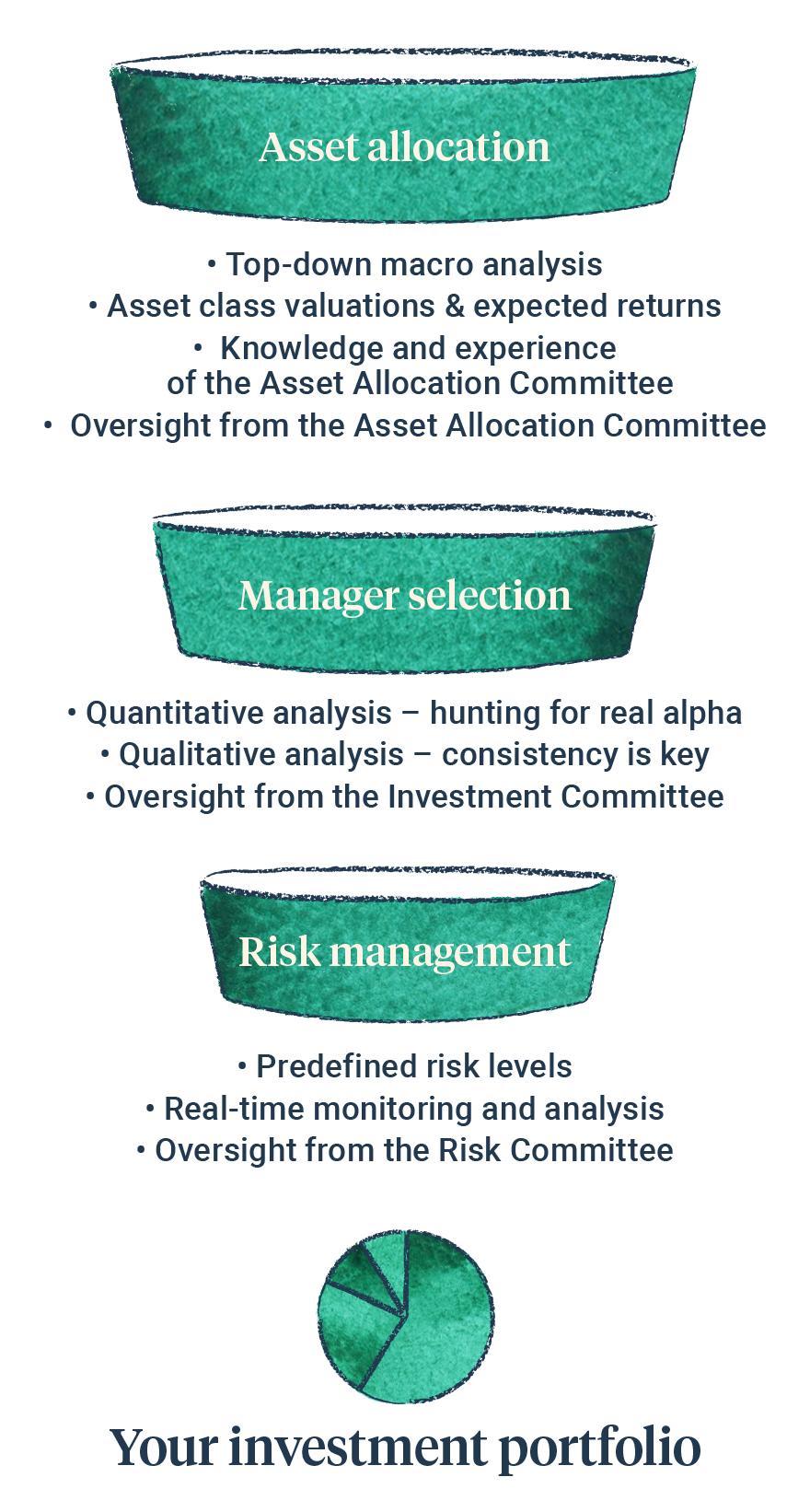Growth (economic)
The global economy remains resilient, economic activity is cooling, but so is inflation.
The key issue investors are grappling with is whether we will see recessions, and if so, what form those recessions will take. In our view, the likelihood of deep recessions has been reducing as the year has progressed, because economies have been cooling gradually rather than grinding to a halt as many predicted earlier this year.
Leading indicators are used to forecast future economic activity, one of the most popular being Purchasing Manager Indices (“PMIs”) which are monthly surveys of business executives who make orders for their companies. Readings below (above) 50 indicate economic contraction (expansion).
The latest PMIs for various regions are Global (48.8), US (49.4), UK (46.7), Japan (48.1), Europe (43.8), Emerging Markets (50.1). This data agrees with other readings we follow. Combined, they support the view of a gradual, managed slowdown, and that emerging market fundamentals are more positive than developed markets.
Headline inflation has been falling but prices remain high, reducing spending and excess savings. Excluding shelter costs, annual inflation in the US is now at the Fed’s 2% target. Headline inflation remains high in many countries, but the speed of price increases has broadly fallen, which is positive.
Recent Consumer Price Index (“CPI”) readings are 4.6% in the UK (6.3% last time we wrote two months ago), 3.2% in the US (3.7% two months ago), 2.9% in the Euro area (down from 4.3%), and 3.3% in Japan (up from 3.1%).
Inflation remains one of the key variables influencing Central Bank policy, economic growth (e.g., the likelihood of recession), and financial markets. Whilst positive inflation numbers mean price levels are still increasing, inflation appears to be getting under control.
Unemployment remains at or near historic lows in the UK (4.3%), US (3.9%) and Eurozone (6.5%). These numbers have increased slightly in recent months. UK unemployment is at half its peak post the 2008 Financial Crisis.
Looking ahead, the IMF expects global growth to fall from an estimated 3.5% in 2022 to 3% in 2023 and 2.9% in 2024, which is below the historical (2000-19) average of 3.8% but positive growth, nonetheless. It forecasts emerging and developing economies to grow more quickly than this, at 4.1% (2022), 4% (2023) and 4% (2024).
Interest rate & liquidity environment
Most major economies have been raising interest rates in an attempt to cool inflation. However, interest rates are not expected to move much higher because inflation has been falling. The risk of a policy mistake by Central Bankers is elevated in our view. Reduce rates too soon and inflation could rise again, as was the case in the 1970s. But keeping rates too high for too long could damage companies and consumers with high debt levels. This is a difficult balancing act, especially since the impact of higher rates generally takes 12 to 24 months to be felt.
Financial conditions and geopolitical risks have eased slightly, with oil, the US $, spreads, and yields falling back from highs. China is stimulating its massive economy while easing tensions with Western democracies.
Valuations & earnings outlook
At the global level, corporate earnings have been resilient, and higher than expected in many areas. Global profit margins have remained robust, despite rising prices and borrowing costs.
US companies remain significantly more profitable than other regions. Corporate earnings in the United States recently reached an all-time high, and analysts expect robust earnings growth next year. Earnings in the UK have been falling but analysts currently expect a recovery next year. For other developed markets, Japan is a standout performer for profitability, with corporate earnings expected to grow 10.7% this year, and 6.6% in 2024. Earnings within Emerging Markets have fallen this year, but analysts expect a strong recovery next year with +17.9% expected earnings growth for 2024.
The US stock market is the only major region that is meaningfully overvalued compared to history. Investors are prepared to pay more for companies listed in the US in general, and especially for those expected to profit most from new technologies (e.g., artificial intelligence). The UK stock market is very cheap compared to history, trading about 30% more cheaply than its 10-year average (price to earnings ratio).
Assessing the value of different asset classes compared to historical patterns indicate that investors are now pricing in a lower probability of recession than they did earlier this year. However, many assets are still trading significantly more cheaply than others, for example, smaller company stocks (especially the UK and mainland Europe) as well as many emerging and frontier markets.
Sentiment / flows
Predicted stock market volatility has been fairly low all year, the widely followed VIX index has rarely edged above its long-term average of 21 throughout 2023 (currently at 13). Readings above 30 generally indicate fears of large drawdowns in stocks. Stock market momentum is pointing upwards in many markets as investors have been more risk-on because economic conditions have turned more positive.








